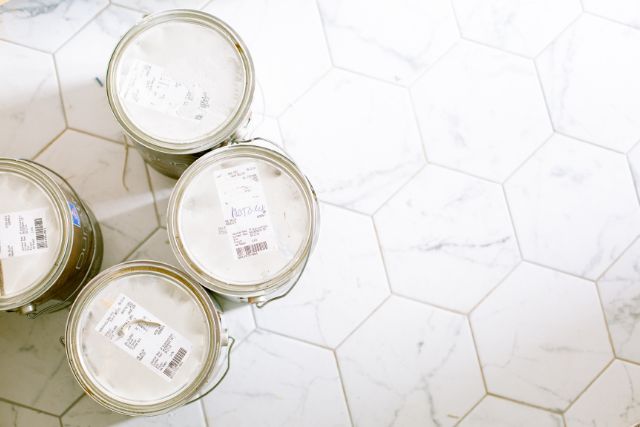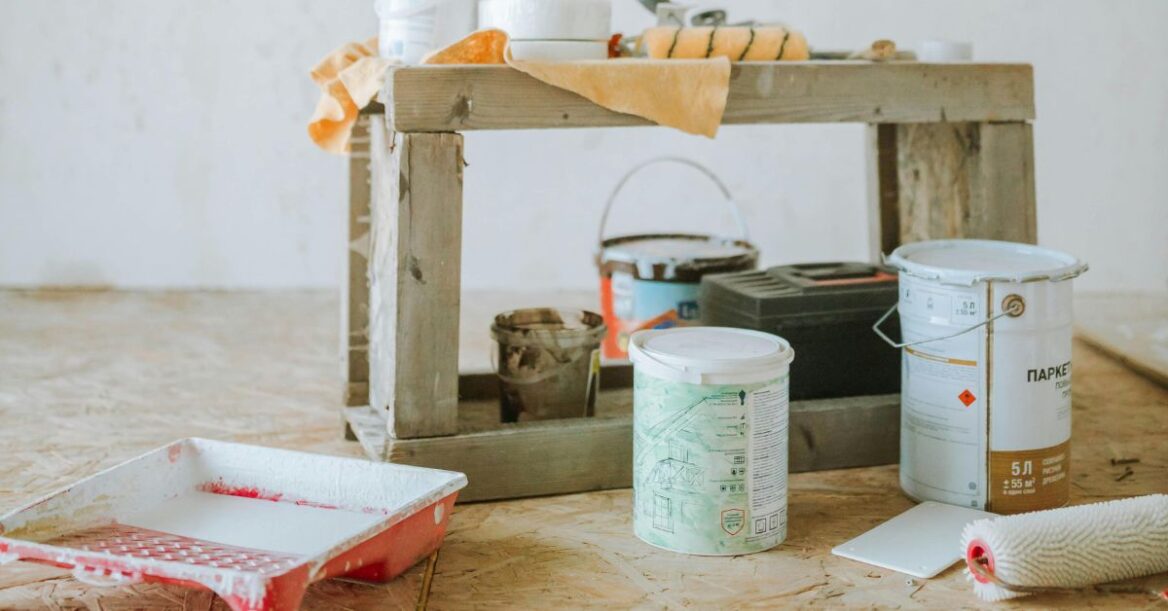Properly storing leftover paint is essential for maintaining its quality and ensuring safety in your home.
Whether you’ve just finished a DIY project or hired professionals, knowing the right way to store paint can save you time and money while preventing accidents.
Let’s dive into the best practices to keep your leftover paint in top shape for future use.
Why Proper Paint Storage Is Important
Paint isn’t just a liquid in a tin; it’s an investment.
Proper storage protects this investment, keeps your space safe, and ensures you can touch up walls or complete projects down the line without needing to buy new paint unnecessarily.

Preserving Paint Quality for Future Use
Stored correctly, paint can last years. This means you’ll have the exact shade you need for touch-ups or new projects.
Improper storage, however, can lead to dried-up or separated paint, making it unusable and a waste of money.
Ensuring Safety for Your Household
Household paint contains chemicals that can be hazardous if mishandled. Storing it securely prevents spills, reduces the risk of accidental poisoning, and keeps it out of reach from children and pets.
A little effort now can prevent big problems later.
Step-by-Step Guide to Storing Leftover Paint
Follow these steps to store your leftover paint like a pro. It’s simpler than you might think, but attention to detail makes all the difference.
Cleaning the Paint Can and Tools
Before sealing the paint can, wipe the rim clean. This ensures a tight seal and prevents dried paint from falling into the can when reopened.
Use a damp cloth or an old rag to remove any drips on the outside of the can too. Clean your brushes and rollers thoroughly to avoid contaminating the paint with debris the next time you use them.
Sealing the Paint Can Properly
A tight seal is key to keeping paint fresh. Place plastic wrap over the can’s opening before hammering the lid down.
Use a rubber mallet rather than a regular hammer to avoid denting the lid, which could compromise the seal.
Transferring Paint to Smaller Containers
If you only have a small amount of paint left, transfer it to a clean, airtight container like a mason jar.
This minimizes air exposure and extends the paint’s shelf life. Label the container with the paint colour, brand, and date.
Ideal Storage Conditions for Leftover Paint
Where and how you store paint matters as much as how you seal it. Consider the environment where your paint will live to avoid damage.

Temperature and Humidity Considerations
Paint prefers moderate conditions. Store it at temperatures between 15°C and 27°C. Avoid areas prone to extreme cold or heat, like garages or sheds, which can cause the paint to separate or solidify.
Humidity is another enemy; keep paint in a dry location to prevent rusting cans.
Choosing the Best Location for Storage
Pick a spot that’s cool, dry, and out of direct sunlight. A basement or closet works well if it’s not too damp. Avoid storing paint near flames, heaters, or any source of ignition. Safety first!
Organizing and Labeling Your Paint
A little organization goes a long way. Taking a few minutes to label and sort your paint now will save you hours of hunting later.
Creating Easy-to-Read Labels
Write down the brand, colour name, and finish (e.g., matte, gloss) on a label or piece of masking tape. Include the date it was last used to gauge its freshness.
You’ll thank yourself later when searching for that perfect shade.
Tips for Organizing Paint by Color and Type
Store paint cans upside down to create a tighter seal. Group similar colors or finishes together, so you can quickly locate what you need. Keep a small swatch of the paint taped to the lid for quick identification.

Common Mistakes to Avoid When Storing Paint
Even well-intentioned DIYers make mistakes. Here’s how to avoid the most common pitfalls.
Leaving Paint Cans Partially Sealed
A loose lid allows air in, which dries out the paint. Always double-check the seal before putting it away, even if you’re in a rush.
Storing Paint in Extreme Temperatures
Hot attics and freezing garages are no place for paint. Extreme temperatures can ruin its consistency and make it unusable. Choose a stable environment to keep your paint in good condition.
Disposal Tips for Unusable or Leftover Paint
Sometimes, paint just doesn’t make the cut anymore. If it’s past its prime, don’t toss it in the bin. Here’s what to do instead.
How to Check if Paint Has Gone Bad
Smell the paint – if it has a rancid odour, it’s likely gone bad. Check for clumps or separations that can’t be mixed back together. If in doubt, test it on a small surface.
Local Guidelines for Safe Paint Disposal in Sydney
In Sydney, leftover paint can often be dropped off at community recycling centres or hazardous waste events. Contact your local council for specific guidelines.
Never pour paint down the drain – it’s harmful to the environment and illegal.
FAQs About Storing Leftover Paint
Here are quick answers to common questions about leftover paint storage.

How Long Can Paint Be Stored?
When stored properly, unopened latex paint can last up to 10 years. Opened paint may last 2-5 years, depending on its storage conditions.
What Should I Do If My Paint Separates?
If the paint has separated but isn’t spoiled, stir it thoroughly. Use a paint mixing stick or electric mixer for stubborn cases. If it doesn’t mix back to a smooth consistency, it’s time to dispose of it.
Conclusion: Save Money and Stay Safe
Storing leftover paint correctly is a simple way to save money, reduce waste, and keep your home safe.
With these tips, you’ll always have fresh, usable paint for touch-ups or new projects. Remember, a little care now goes a long way later. Happy painting!

